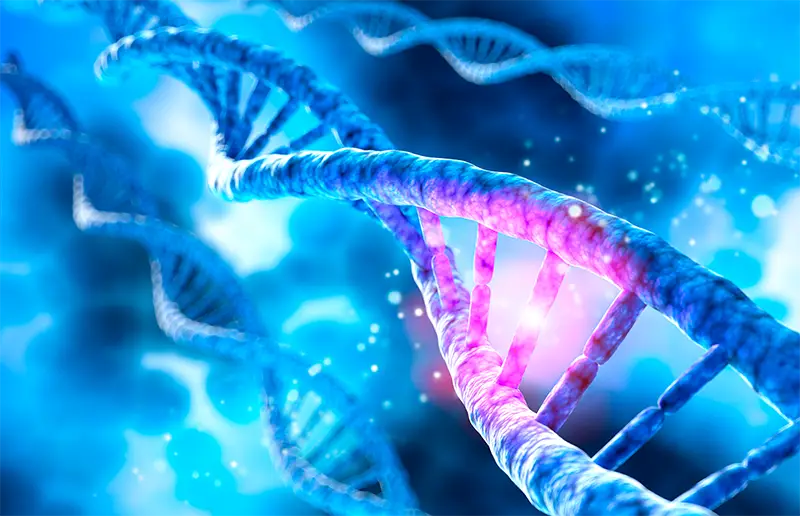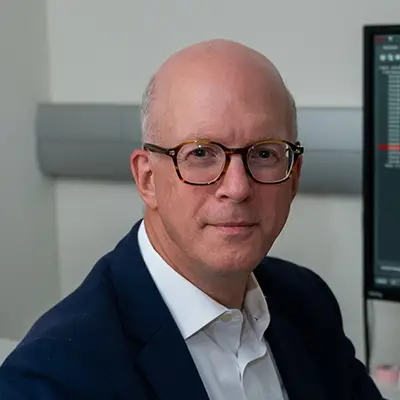Neurologists at NewYork-Presbyterian and Columbia recently received a $15 million grant from the National Institutes of Health (NIH) to support the development of individualized gene-based therapies for patients with ultrarare forms of amyotrophic lateral sclerosis (ALS).
Neil Shneider, MD, PhD, a neurologist and director of the Eleanor and Lou Gehrig ALS Center at NewYork-Presbyterian and Columbia, is the lead investigator on the three-year grant from NIH’s Ultra-rare Gene-based Therapy Network (URGenT), which will support early drug development activities for nine patients whose ALS is caused by extremely rare mutations in single genes. URGenT grants support the advancement of cutting-edge gene therapies for neurological disease that affect fewer than 1 in 50,000 people. The goal of the project is to obtain approval from the Food and Drug Administration (FDA) to test the therapy in humans.
“ALS is a genetically complex disease and there are dozens of genes in which mutations have been found that cause ALS,” Dr. Shneider says. “Many of these individual mutations are extremely rare, so the kinds of technologies that have been applied to more common genetic forms of ALS are not an option because there just aren’t enough of these patients to make it worthwhile for a company to make the investment.”
Silence ALS Program
The research will be carried out by the Silence ALS program, a joint effort between Columbia and the n-Lorem Foundation, which has already successfully used a gene silencing platform to develop an antisense oligonucleotide (ASO) treatment for one patient with ALS with a mutation in the TARDBP gene. They have also developed a second, non-allele-specific ASO for the treatment of all patients with a mutation in the CHCHD10 gene, with which 2 ALS patients have been treated so far.

A new grant from the NIH will support the development of ASO treatments for patients with ultrarare forms of ALS.
As part of the Silence ALS program, NewYork-Presbyterian and Columbia genetic counselor Elizabeth Harrington, MS, CGC, also works with patients to identify asymptomatic or presymptomatic carriers of these mutations within their family. Researchers in the program are starting efforts to develop ASO drugs for these asymptomatic carriers in anticipation of their clinical onset, with the goal of starting treatment as early as possible in the course of disease.
There’s real reason to be hopeful that functional recovery is possible. The key is treating it early.
— Dr. Neil Shneider
As part of the Silence ALS program, NewYork-Presbyterian and Columbia genetic counselor Elizabeth Harrington, MS, CGC, also works with patients to identify asymptomatic or presymptomatic carriers of these mutations within their family. Researchers in the program are starting efforts to develop ASO drugs for these asymptomatic carriers in anticipation of their clinical onset, with the goal of starting treatment as early as possible in the course of disease.
Using Antisense Technology
Dr. Shneider says the initial effort will focus on TARDBP, which is a “significant player in the pathogenesis of ALS.” From there, they aim to expand to as many ALS genes as possible. While the grant will fund research into nine individualized treatments, Silence ALS is also raising funds to bring more individualized ASO treatments to FDA approval.
“We now have over 20 cases that have been accepted for design and development,” Dr. Shneider says. “Not all of them will be successful but we have to prepare for that possibility so we’re raising monies through various sources to try to fund this very expensive but very worthwhile effort.”
The ASO drugs are individualized, with researchers targeting a genetic sequence that is unique to the patient’s mutated gene allele. The drugs are designed to target a single nucleotide polymorphism (SNP) that is linked to the mutation while carefully maintaining the wild type copy of the gene. “We have to be surgical in our silencing of the mutated gene versus wild type,” Dr. Shneider says.
By focusing on these rare genetic forms of the disease and developing therapeutics for these ultrarare cases, we’re going to learn something in the process about ALS in general and gain insights that will helps us to develop therapeutics that could be used more broadly for ALS patients.
— Dr. Neil Shneider
While there is no cure for ALS, the goal for these therapies is to at least slow disease progression, and to potentially halt progression and functional decline. “There’s real reason to be hopeful that functional recovery is possible,” says Dr. Shneider. “The key is treating it early.”
Broader Implications
Though the patients treated by Silence ALS have ultra-rare mutations that are present in less than 1% of genetic ALS cases, the research potentially has broader implications for ALS treatment. Dr. Shneider says the discoveries being made around the biology in these cases are likely relevant to all forms of ALS.
“By focusing on these rare genetic forms of the disease and developing therapeutics for these ultrarare cases, we’re going to learn something in the process about ALS in general and gain insights that will helps us to develop therapeutics that could be used more broadly for ALS patients,” he says.




